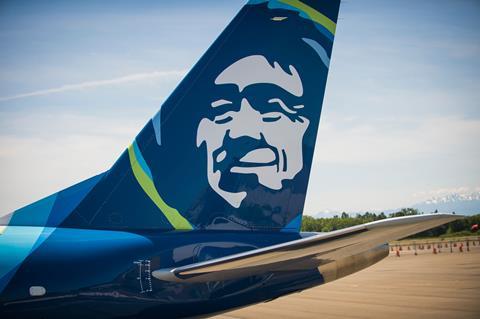Alaska Airlines plans to acquire Hawaiian Airlines for $1 billion under a deal expected to close within 18 months
The two carriers’ parent companies – Alaska Air Group and Hawaiian Holdings – said on 3 December they entered into a “definitive agreement” under which Alaska will pay $18 in cash per share of Hawaiian’s stock. Alaska would also assume $900 million of Hawaiian’s debt.
Both companies’ boards of directors have approved the deal. Hawaiian’s shareholders are expected to vote whether to approve it in the first quarter of 2024, the airlines say.
Alaska and Hawaiian expect the combination will close in 12-18 months, though it requires regulatory approval – no sure bet considering the US government’s recent push back against other airline tie ups. Alaska operates a US West Coast-heavy route network, while Hawaiian’s network includes intra-island Hawaii flights and long-haul flights to the mainland USA, South Pacific, Australia and Asia.
Alaska chief executive Ben Minicucci is to be CEO of the combined company, which will be headquartered in Seattle.

“The combined company will unlock more destinations for consumers and expand choice of critical air service options and access throughout the Pacific region, continental United States and globally,” Hawaiian says. “The transaction is expected to enable a stronger platform for growth and competition in the US, as well as long-term job opportunities for employees, continued investment in local communities and environmental stewardship.”
The two carriers, combined, carried more than 54 million passengers during the first eight months of 2023. They say both brands will remain independent but be integrated ”into a single operating platform”.
“This combination is an exciting next step in our collective journey to provide a better travel experience for our guests and expand options for West Coast and Hawaii travellers,” says Alaska’s Minicucci. “We have a longstanding and deep respect for Hawaiian Airlines, for their role as a top employer in Hawaii, and for how their brand and people carry the warm culture of aloha around the globe.”
He adds that Alaska is “fully committed to investing in the communities of Hawaii and maintaining robust neighbor-island service that Hawaiian Airlines travellers have come to expect”.
“We will be able to deliver more for our guests, employees and the communities that we serve,” adds Hawaiian CEO Peter Ingram. “In Alaska Airlines, we are joining an airline that has long served Hawaii, and has a complementary network and a shared culture of service.”
“With the additional scale and resources that this transaction with Alaska Airlines brings, we will be able to accelerate investments in our guest experience and technology, while maintaining the Hawaiian Airlines brand,” he says.
The combination also promises ”run-rate synergies” of $235 million, the airlines say.
The deal allows Honolulu-headquartered Hawaiian to join the OneWorld alliance, of which Alaska is a member. Together, the carriers will offer service to 138 destinations, including nonstop service to 29 international destinations in the Americas, Asia, Australia and the South Pacific, and combined access to over 1,200 destinations through OneWorld, the companies say.
The airlines plan to hold an investor conference later in the day to give more details on the transaction.
If approved, the merger will combine carriers with largely disparate fleets.
Hawaiian operates a mix of Airbus and Boeing jets. It flies 23 ageing 717s on intra-island routes, and deploys 18 A321neos both within its home state and on flights between Hawaii and the US mainland. Hawaiian’s long-haul fleet includes 25 A330s, and it holds unfilled orders for 12 787-9s, the first of which is scheduled for delivery next year, according to Cirium fleets data.
Alaska’s fleet includes Boeing 737s – it has 220 of those jets, including 737NGs and 737 Max. It holds orders for another 89 737 Max. It also operates 83 Embraer 175s and has nine more of those on order, according to the companies’ investor presentation.
Combined, the company’s fleet would include roughly 300 aircraft, excluding jets on order.
Whether Alaska’s management team will chose for the combined company to continue operating both Airbus and Boeing narrowbodies remains an open question, especially considering Alaska chose to divest A320-family aircraft acquired through its 2016 purchase of Virgin America. Alaska only recently grounded the last of the Airbus narrowbodies, returning to an all-737 fleet.
With additional reporting by Jon Hemmerdinger.


























